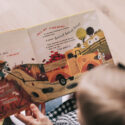As human beings, there are things and circumstances around us that will affect us emotionally, be it seeing a child crying or seeing a little puppy whining for attention. In situations of great distress, we may be prone to exhibiting unsightly behaviours and making rash decisions. In order to avoid such scenarios from happening, we exert a great amount of control over our emotions by using various adaptive strategies. This skill is called emotional regulation.
However, unlike most people, children with special needs struggle greatly with emotional regulation. They have difficulty in developing adaptive skills to manage their emotions. Children with ADHD, for example, tend to show excessive emotions and when they do, they are perceived to be overly loud or overly emotional, resulting in their peers rejecting them and causing these children to become social outcasts and to experience emotional distress.
Another group of children with special needs who have trouble with emotional regulation are those with ED or Emotional Difficulty. Children with ED are either too emotional or not emotional at all. They may either exhibit externalizing behaviours in the form of aggression and non-compliance, or they may internalize their feelings and show zero emotions. As such, these children have trouble creating relationships with other people because they are often misunderstood when they show their emotions in a different manner, intensity or even timing.
It is therefore crucial to develop the ability to regulate your emotions as early as possible. If delayed or neglected, it could lead to much bigger problems for the child in the future. Younger children are unable to fully comprehend their emotions just yet. They require proper guidance from parents and teachers to help them understand and manage their emotions. In relation to this, studies have suggested that picture books play an important role in helping children manage their emotional difficulties.
Picture Books
As the word itself implies, picture books are children books that contain various illustrations describing an event or a story. Picture books are very appealing to children because of the colourful illustrations inside. Not everyone may know this but aside from the entertainment it provides for children, picture books have important benefits to their emotional well-being.
Children are usually fond of the characters in picture books because they are relatable. The children can relate to the feelings and emotions of the characters to themselves. They are able to understand their own feelings because they see it being portrayed by the characters. When they see a picture of a sad kid because of a broken toy, they realise that that was the feeling they felt when their toy broke. They will be able to identify with feeling of ‘sadness’ that is being portrayed and it validates how they felt and reacted when they were in the same scenario. As such, the child is then able to talk more openly about their feelings and discuss their feelings in a more constructive way.
Picture books also help children in literacy development. They learn about different cultures, emotions, events, etc. through the narratives of the picture book. It widens their vocabulary and helps enhance their comprehension skills as well.
Another way a child learn about emotions is through the signs and images they get from other people. This type of learning is called visual literacy. Unfortunately, children with special needs struggle with this aspect. They have difficulty decoding signs and symbols to identify emotions. As such, using illustrations to represent emotions can help them to develop their visual literacy. Picture books serve as a more tangible representation of emotions and body language through the characters in the story. It is also easier for children to recall this information since picture books are more accessible.
Teaching emotional regulation to children with special needs can be very difficult. However, with the appropriate and structured strategies and, of course, with the help of picture books, it is not impossible. It starts from making them understand their own emotions so they can learn to regulate it. Although it will take a lot of hard work and patience, it will surely be worth it as the child’s overall well-being, such as their emotional, mental and physical health, is utmost important.
Bibliography
Zambo, D. M. (2009). What Can You Lear from Bombaloo? In American Jails (pp. 39-45). American Jails Association.

Comments are closed